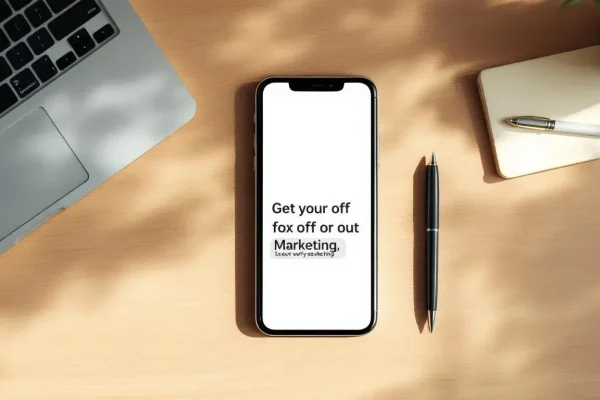Creating Compelling Content for Marketing Automation

At Drop Cowboy, we know that content for marketing automation is the backbone of successful digital campaigns. It’s the fuel that powers your automated systems and engages your audience.
Creating compelling content that resonates with your target market can significantly boost your conversion rates and customer loyalty. In this post, we’ll explore the key elements of crafting effective content for your marketing automation strategy and share practical tips to help you maximize your results.
Who Is Your Audience
The Power of Segmentation
Audience segmentation transforms marketing automation. At Drop Cowboy, we’ve witnessed how content tailored to specific audience segments improves engagement rates and conversions.

Segmentation isn’t just a buzzword; it’s a game-changer. When you divide your audience into distinct groups based on shared characteristics, you create hyper-targeted content that resonates on a personal level. A MailChimp study found that segmented email campaigns had a 14.31% higher open rate than non-segmented campaigns.
To start, identify key factors that differentiate your audience (demographics, purchase history, engagement level, or specific pain points). Use this information to create targeted campaigns that speak directly to each group’s needs and interests.
Crafting Accurate Buyer Personas
Buyer personas represent your ideal customers. They include psychographic information like goals, challenges, and decision-making processes. HubSpot reports that marketing personas make websites 2-5 times more effective and easier to use by targeted users.
To create effective buyer personas:
- Analyze your existing customer data
- Conduct surveys and interviews with current customers
- Monitor social media interactions and online behavior
- Use tools like Google Analytics to gather demographic information
The goal: create detailed and realistic personas. This allows you to craft content that truly speaks to your audience’s needs and motivations.
Leveraging Behavioral Data
Understanding your audience’s online behavior is crucial for effective automated marketing campaigns. Tools like Google Analytics, heatmaps, and customer journey mapping provide valuable insights into how users interact with your content.
Pay attention to metrics like:
- Pages visited
- Time spent on site
- Click-through rates
- Conversion paths
Use this data to inform your content strategy. For example, if users who visit a particular page are more likely to convert, you can create an automated email campaign that directs more traffic to that page.
Personalizing Your Approach
Personalization takes your marketing automation to the next level. With the right data and tools, you can create campaigns that feel tailor-made for each recipient.
Try these personalization techniques:
- Use the recipient’s name in email subject lines and body copy
- Recommend products based on past purchases or browsing history
- Send targeted content based on the recipient’s industry or job title
- Adjust send times based on when each recipient is most likely to engage
Personalization isn’t just about using a name; it’s about delivering relevant content at the right time.
Continuous Improvement
Your audience isn’t static, and neither should your understanding of them be. Regularly review and update your audience segments and buyer personas. Use A/B testing to refine your messaging and content. Monitor your metrics and adjust your strategies accordingly.
As you deepen your understanding of your audience, you’ll be better equipped to create content that truly resonates. This knowledge forms the foundation for the next crucial step: crafting the right types of content for your marketing automation strategy.
What Content Works Best for Marketing Automation?
Email: The Powerhouse of Automated Marketing
Email stands as a cornerstone in marketing automation. Campaign Monitor reports that email marketing generates $44 for every $1 spent, making it a top-performing channel. To maximize email effectiveness:
- Create compelling subject lines: Keep them under 41 characters for optimal open rates.
- Personalize content: Use recipient data to tailor messages (increasing relevance and engagement).
- Segment your list: Target specific audience groups with relevant content.
- Add clear calls-to-action (CTAs): Guide readers towards desired actions.
- Optimize for mobile: 46% of all email opens occur on mobile devices.
Social Media: Amplifying Automated Efforts
Social media platforms offer unique opportunities for automated marketing. Hootsuite states that 90% of brands use social media to increase brand awareness. To leverage social media in your automation strategy:
- Schedule posts in advance: Maintain a consistent presence without constant manual effort.
- Use platform-specific features: For example, Instagram Stories for time-sensitive content.
- Incorporate user-generated content: Showcase customer experiences to build trust.
- Implement chatbots: Automate customer service and lead generation on platforms like Facebook Messenger.
Landing Pages: Traffic Conversion Machines
Well-designed landing pages convert traffic from your automated campaigns. HubSpot found that businesses with 40+ landing pages generate 12 times more leads than those with 5 or fewer. To create effective landing pages:
- Align messaging with your email or ad content.
- Use a clear, compelling headline that addresses the visitor’s pain point.
- Include social proof like testimonials or case studies.
- Optimize page load speed: A 1-second delay in page response can result in a 7% reduction in conversions.
- A/B test different elements to continually improve performance.
Lead Magnets: Prospect Attraction and Nurturing
Lead magnets are valuable resources offered in exchange for contact information. They excel at initiating automated nurture sequences. Popular lead magnet formats include:
- Ebooks or whitepapers: In-depth resources on industry topics.
- Webinars: Live or pre-recorded educational sessions.
- Templates or tools: Practical resources that solve immediate problems.
- Free trials or demos: Especially effective for SaaS products.

When creating lead magnets, focus on solving specific problems for your target audience. The more valuable and relevant your offer, the more likely prospects will engage with your automated follow-up sequences.
The strategic combination of these content types in your marketing automation efforts creates a robust, engaging campaign that guides prospects through the buyer’s journey. The next section will explore best practices for creating automated marketing content, ensuring you maximize the impact of your efforts.
How to Supercharge Your Automated Marketing Content
Personalization: Beyond First Names
Personalization transforms automated marketing. It extends past using a customer’s first name. Effective personalization utilizes behavioral data, preferences, and past interactions to create highly relevant content.

Instead of sending generic product recommendations, use purchase history to suggest complementary items. If a customer frequently browses a specific category on your website, tailor your email content to highlight new arrivals or special offers in that category.
Epsilon reports that 80% of consumers are more likely to make a purchase when brands offer personalized experiences. This statistic highlights the importance of analyzing customer data to create truly personalized content.
Dynamic Content: The Game Changer
Dynamic content adapts in real-time based on user behavior, preferences, or demographics. It acts like a chameleon in your marketing toolkit, changing to suit each recipient perfectly.
Picture an email that displays different product recommendations based on the recipient’s location, past purchases, or even the current weather in their area (that’s the power of dynamic content).
A study by Litmus found that dynamic content can increase click-through rates by up to 73%. This dramatic improvement demonstrates how effective tailored content can be in engaging your audience.
The A/B Testing Imperative
Don’t assume you know what will resonate with your audience. A/B testing serves as your secret weapon for continual improvement. Test everything from subject lines and CTAs to images and send times.
Some clients achieve a 25% increase in open rates simply by testing different subject line formats. Small changes can lead to big results, but you’ll never know unless you test.
A/B testing isn’t a one-time process. It’s an ongoing strategy for refining and optimizing your automated marketing content. The market evolves, and so should your approach.
Multimedia Integration
Incorporate various media types into your automated marketing content to boost engagement. Use videos, infographics, and interactive elements to make your messages more compelling.
According to HubSpot, video content in emails can increase click rates by 300% (a significant boost in engagement). Try to include short, attention-grabbing videos or GIFs in your automated email campaigns.
Consistency Across Channels
Maintain a consistent brand voice and message across all your automated marketing channels. This consistency helps reinforce your brand identity and builds trust with your audience.
Use the same visual elements, tone, and key messages in your emails, social media posts, and landing pages. This cohesive approach creates a seamless experience for your customers as they interact with your brand across different platforms.
Final Thoughts
Content for marketing automation requires a deep understanding of your audience and strategic creation. Personalization, dynamic content, and A/B testing boost the effectiveness of automated marketing efforts. Tailoring messages to individual preferences creates more relevant and engaging experiences for your audience.

Marketing automation continues to evolve with sophisticated personalization and AI-driven content creation. Businesses must stay ahead of trends and refine their approach to create resonant campaigns. Measuring and improving results consistently drives meaningful outcomes in automated marketing.
Drop Cowboy offers innovative features for effective communication in marketing automation. Our platform includes Mimic AI™ for personalized voice messages and Smart Delivery™ for efficient global message delivery. Leveraging these tools helps businesses create more engaging and impactful automated marketing campaigns, ultimately driving better results and stronger customer relationships.
blog-dropcowboy-com
Related posts

April 14, 2025
Is CJ Dropshipping Reliable? Reviews and Insights
Explore CJ Dropshipping reviews, reliability insights, real user feedback, and latest trends in our comprehensive analysis to make informed decisions.

March 1, 2025
Text Marketing Examples That Drive Results
Explore text marketing examples that boost engagement and deliver results with proven strategies for increasing conversions effectively.

April 21, 2025
Salesforce Marketing Automation: Features and Benefits
Explore Salesforce Marketing Automation features and benefits to boost efficiency and accelerate your sales growth with proven strategies.

March 11, 2025
Send Appointment Reminders with Voice Broadcast
Boost efficiency with Voice Broadcast for appointment reminders. Reduce no-shows and enhance communication using this effective strategy.

March 9, 2025
Top Ringless Voicemail Drop Software Solutions
Explore top ringless voicemail drop software for efficient customer outreach and boost engagement in your communication strategy.

April 2, 2025
Automation Marketing Strategy: Boost Your ROI
Boost ROI by adopting an automation marketing strategy. Discover practical tools and trends for effective marketing automation today.